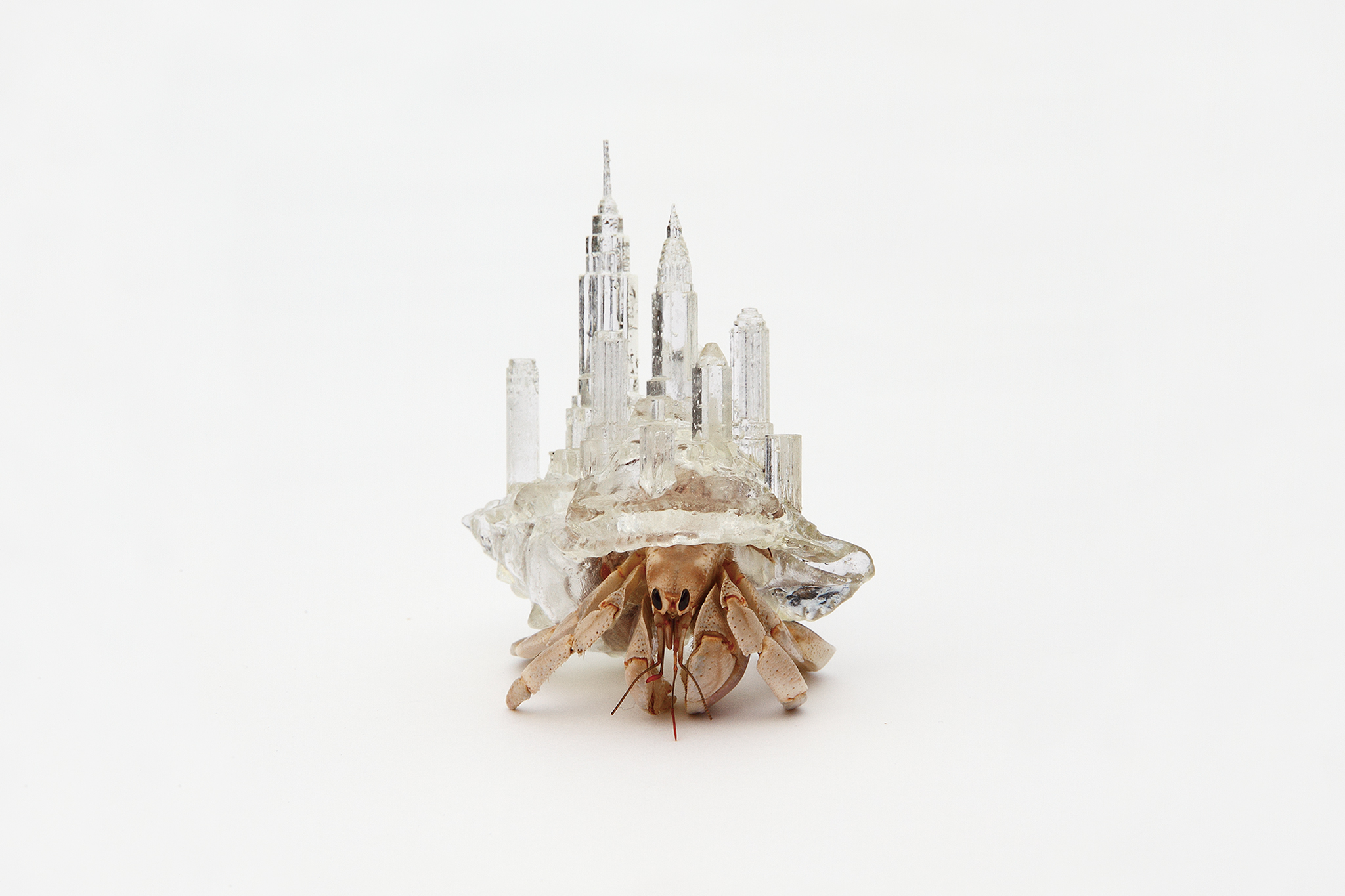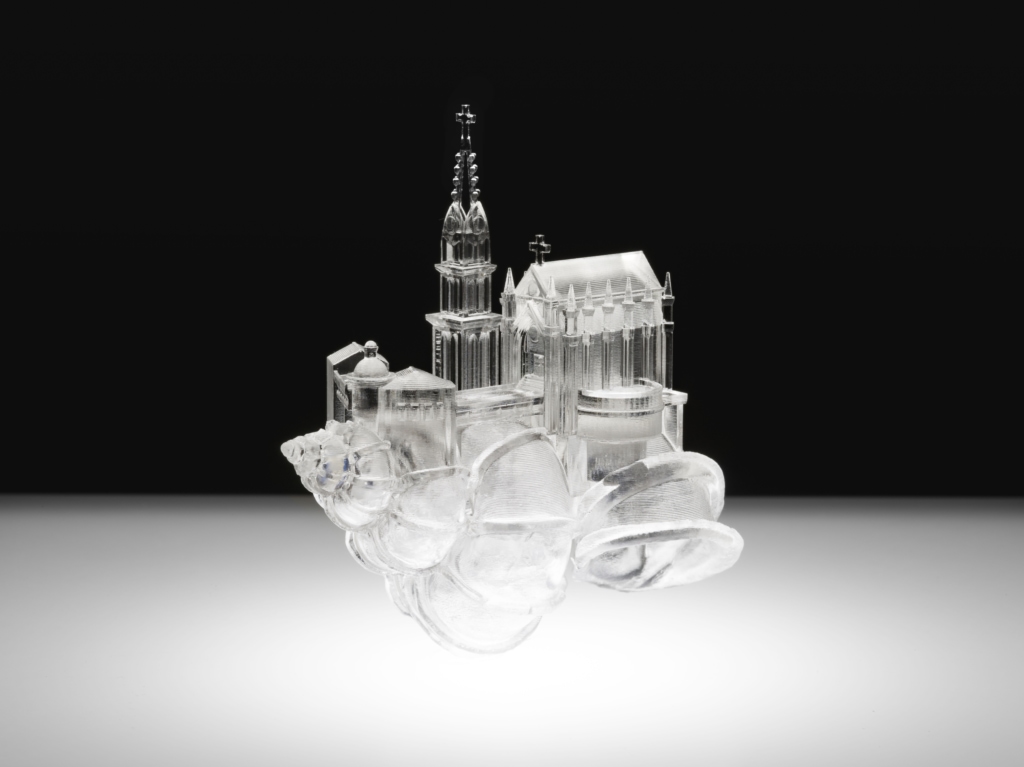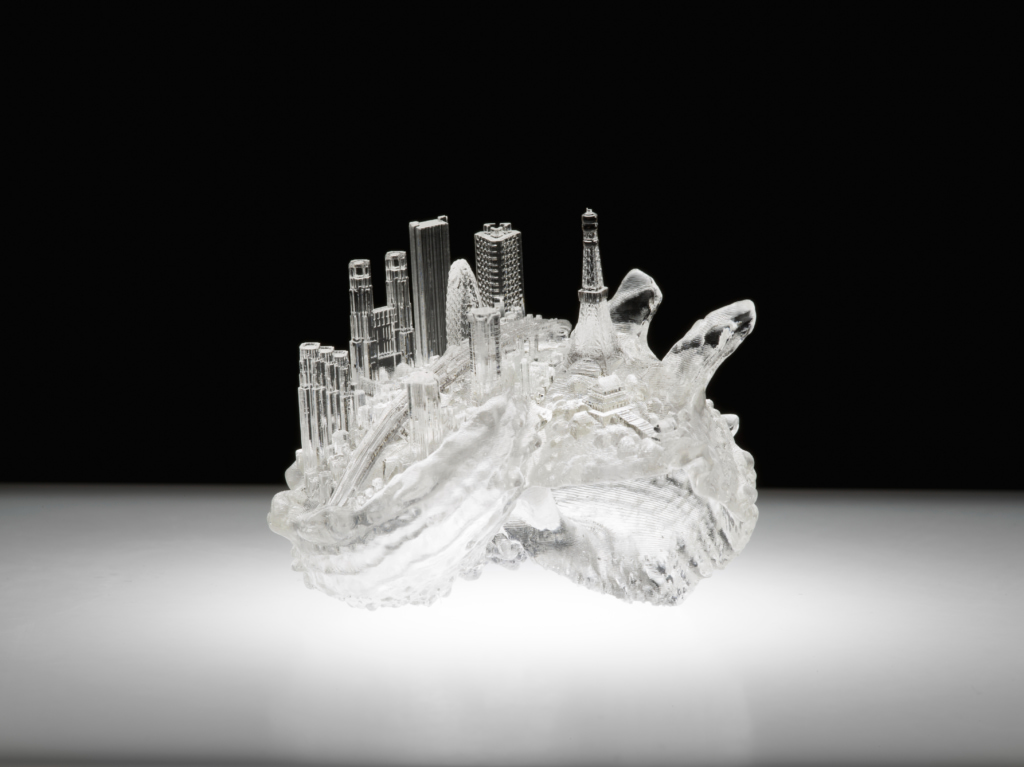It’s something that belongs in a surrealist painting, a Dali: a glass of water containing fluffy, drifting clouds and a pale blue sky. The only difference is that it’s not a painting. You can drink it — it’s real.
In the midst of the early Covid-19 state of emergency in 2020, Aki Inomata felt like the world was changing quickly and unpredictably. “There’s coronavirus, the continuing path of environmental destruction,” Inomata says in a Zoom interview promoting the Mori Art Museum’s winter “Roppongi Crossing 2022: Coming and Going” exhibition.
“We’re not going to be able to wake up to the same tomorrow. It’s impossible to actually see yesterday’s sky again — but I can recreate its appearance in a cup.”
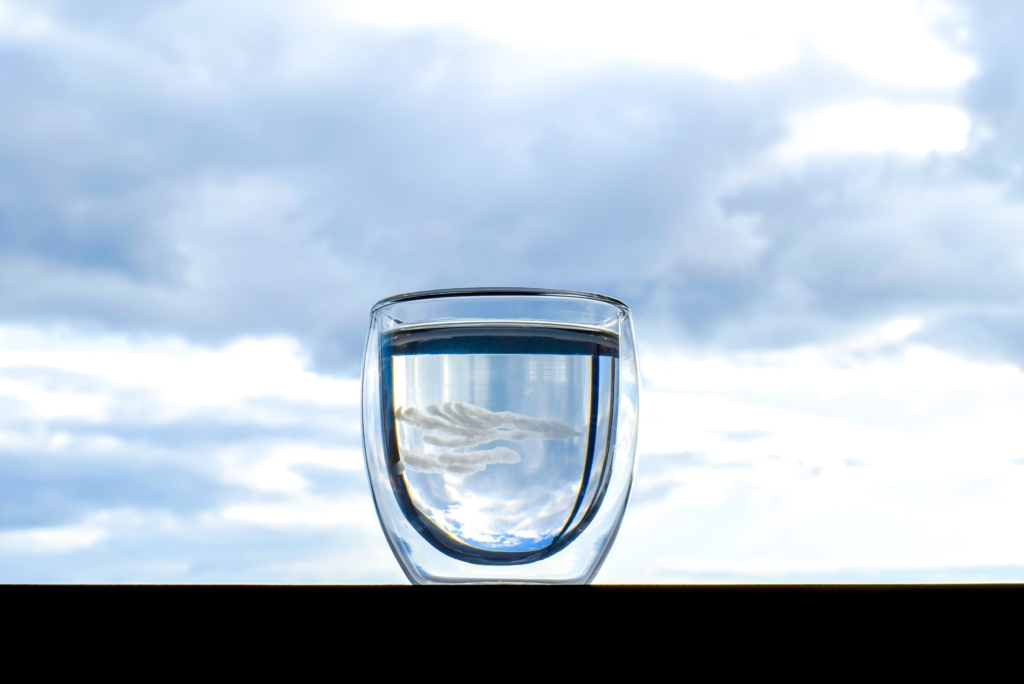
©︎AKI INOMATA courtesy of Maho Kubota Gallery
Where Art and Technology Meet
Inomata has used 3D printing technology in a number of her works and exhibits. But this initiative, “Thinking of the Yesterday’s Sky,” required that she take her technological chops to the next level, modifying a 3D printer to create an original piece of technology. The resulting printer she built replicates the colors and patterns of the sky based on photographs Inomata takes. The machine delicately drips an organic substance made out of milk and oatmeal into a glass of water. The ensuing sculptures — if you can call them that — are extraordinary, poetic meditations on our changing world. Brought to life with digital technology, they transcend surrealism altogether.
Inomata may be technically an artist, but she doesn’t focus on any one genre. She doesn’t make paintings, sculptures, photographs or films. Instead, she brings together a variety of collaborators, including craftspeople, sculptors, trees, animals and computers, to make singular works. She’s almost like a creative director, bringing her visions to life by challenging the limits of art and technology.
Tokyo-born and raised, Inomata went to art school and focused on digital media. She began writing computer programs and presented her first major work, “0100101,” in 2008. This interactive exhibit fills a room with rippling, swirling patterns. The room at first appears to be full of water, but visitors enter to see that the dynamism is created by the shadows of ripples cast from an illuminated aquarium hanging from the ceiling. The dynamic shadows on the floor — sometimes blooming like flowers, sometimes splashing at random — are controlled by a computer program created by Inomata.
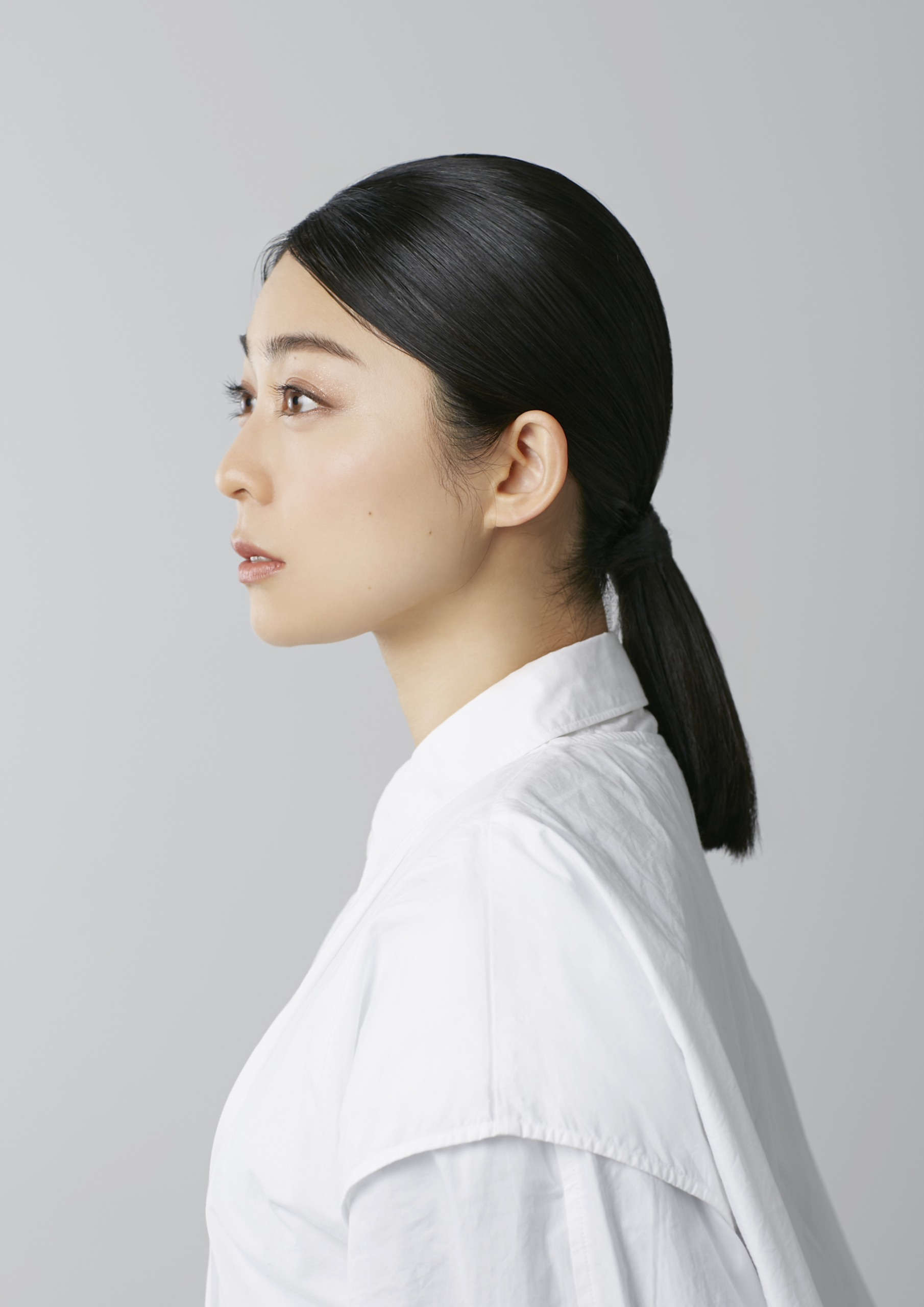
©︎AKI INOMATA courtesy of Maho Kubota Gallery
“I didn’t want to be so much in control of my work,” says Inomata. “There was something about creating art according to a plan that was making me anxious. So I wanted to change my approach, and I felt like this venture went well for me.”
In the same spirit, for her next piece, Inomata looked beyond computers for an even more unlikely collaborator — hermit crabs.
The World is Your Crab Shell
“I’ve always liked living things, but I always lived in Tokyo, so my surroundings weren’t exactly blessed with nature,” says Inomata. “But since I felt distant from nature, I started to develop an interest in it.”
She used 3D printing to create transparent resin “shelters” for hermit crabs. In essence, she built new shells for them, modeled after cities from around the world: skyscraper-dotted cityscapes, countryside villages, ancient temples. The work is in fact ongoing to this day, as the hermit crabs are still residing in Inomata’s homes for them in aquariums.
“This work was more about the interaction between me and the hermit crabs,” explains Inomata. “When I first made shells for them, they were shaped like spheres. But the crabs didn’t like them and refused to go inside. I went back and more closely examined hermit crabs in nature; then I was able to make new shells that the crabs seemed to really like.”
Inomata’s first cross-species collaboration launched a series of innovative artworks in this spirit: She studied French alongside a parakeet. She swapped hair with her dog by making clothes for her dog out of her own hair and clothes for herself out of her dog’s hair. She transposed the growth patterns of clams caught up in the Great East Japan Earthquake onto vinyl records to hear the sea creatures’ earthquake stories.
These projects culminated in another ongoing collaboration between Inomata and animals, currently on exhibit at Roppongi’s Mori Art Museum, titled “How to Carve a Sculpture.” This time, her partners in crime were beavers. The project began when Inomata realized that some of the scraps of wood left behind by beavers resembled sculptures. She started working with zoos around Japan, leaving wood for beavers to chew on overnight and then collecting the “sculptures” the next morning.
“Some of them look like birds, or people — even busts,” says Inomata. “The morning after I left the logs, there would be woodchips scattered everywhere, just like a sculptor’s studio.”
For her exhibitions, Inomata hired human sculptors and used a robotic CNC (computer numerical control) machine to recreate the beavers’ sculptures with different tools and in different sizes. The use of differing artists utilizing distinct tools resulted in all sorts of minute variations in the resulting sculptures.
“A robot follows the rules, but beavers and people don’t. [They] have a will that allows them to decide what to focus on first or what parts of the wood they want to avoid and so on,” says Inomata. “You start to see the soul of the sculpture created by the chewing beaver or sculptor at work compared to the computer.”
The 3D scanning process required to use the CNC machine revealed yet another unlikely artistic presence: longhorn beetles. In the same wood that the beavers were turning into sculptures, beetles were burrowing their own designs from within.
It goes without saying that Inomata visualized and magnified these works of engineering to display in her exhibits. To Inomata, even the remains of chewed logs illustrate the creativity of trees and their unique patterns of bark and softness and hardness. “I saw that there are all sorts of pieces of artwork residing in nature,” she says.
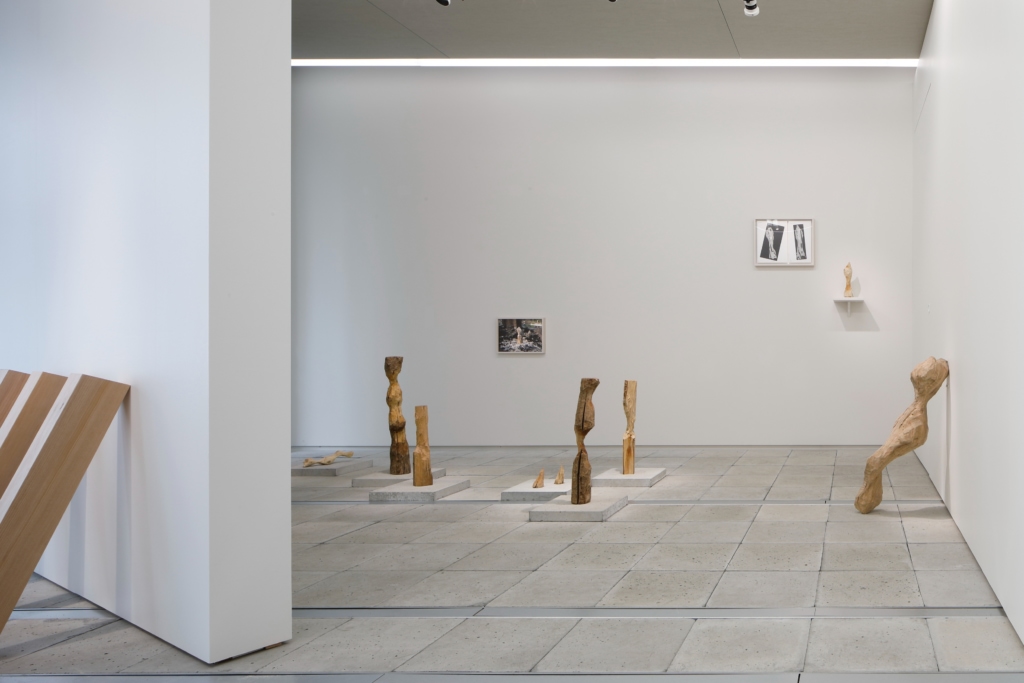
Photo by Keizo Kioku, courtesy of Contemporary Art Foundation
The Art of Discovery
Most recently, Inomata worked on traditional Japanese tie-dying, or shibori, with bagworm moths for an exhibit at the Aichi Triennale 2022. Inomata collaborated with Shibori-Dyeing Kuno-Studio, masters of the 400-year-old Arimatsu Narumi Shibori tradition, to develop a new tie-dying technique based on the pattern on the wings of the bagworm moth.
“There are around 100 techniques surviving today, so we made the 101st through a lot of trial and error,” says Inomata. “In order to figure out the pattern, I consulted scientists who explained how the wing pattern is based on the presence of proteins that share a certain relationship. We interwove the biological knowledge of the moths with the scientific and artistic knowledge of human beings.”
Across Inomata’s work, she addresses a wide variety of social issues: The hermit crab exhibit meditates over concepts of property and land ownership; the beaver exhibit confronts the meaning of art. Her work has explored gender issues, language acquisition and more. But to Inomata, what’s more interesting than any one topic is witnessing a work of art evolve before her eyes, leading her to a new discovery.
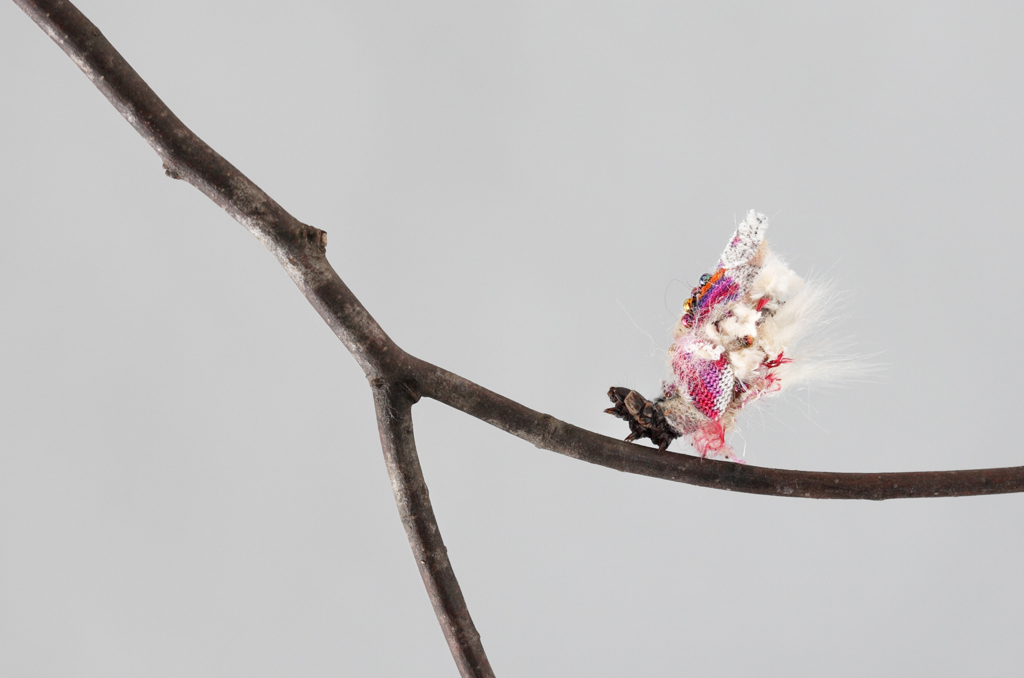
©︎AKI INOMATA courtesy of Maho Kubota Gallery
“I’m most passionate when I feel like the artwork is changing me,” she explains. “There are a lot of parts of my work that I don’t make myself. I’m trying to open up new ways of being an artist.” These revelations are Inomata’s primary motivation and why she’s been able to produce such a volume of work in the last five to 10 years. “I have a lot of open-ended projects, so the art keeps on evolving and changing.”
Inomata’s choice to involve non-human collaborators reveals the delicacy and complexity of the world we inhabit. Humans have shaped our planet a tremendous amount, but both the technology we have created and the natural world are constantly speaking back to us. Climate change is living, breathing proof of this fact, as the temperature and ecosystems of the world change according to human action, but not always in the ways that we expect.
“The world isn’t just about people and their decisions,” says Inomata. “While I won’t be able to escape seeing the world through human eyes, I’m in search of a different way of taking in the world.”

